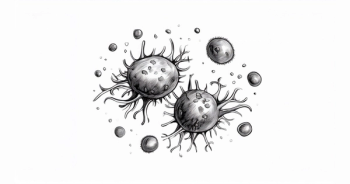
DRd vs Rd in Transplant-Ineligible Myeloma
Considerations for adding daratumumab to the combination of lenalidomide and dexamethasone to treat transplant-ineligible newly diagnosed multiple myeloma based on updated efficacy data from the phase 3 MAIA trial.
Episodes in this series
Rafael Fonseca, MD: I’m happy to review the data regarding updated efficacy that was presented by my colleague Shaji Kumar. We know that MAIA was highly effective, and it has been reported and it has been published, but of course we want to know what happens over time. Dr Kumar presented an updated analysis for young patients who don’t have progression. If you looked out 4 years, 60% of those patients remained without progression. The median PFS [progression-free survival] has not been reached in this group. One-third of patients were only in the doublet arm.
We continue to see an improvement in the duration of disease control. For this patient category, it’s going to be very interesting to ask ourselves about not only the PFS [progression-free survival] but the time to next treatment. Technically, some of the patients could progress in trial by virtue of an increase in protein. However, they may still have some residual benefit from the treatment, not immediately needing treatment. I’m just delighted to see that there’s a continued benefit with this triplet combination.
The MAIA study would be 1 of those examples where I may ask myself, if someone who is diagnosed with multiple myeloma at 80 years old receives a treatment like this and is able to tolerate it, what would be their life expectancy?
In my clinical practice, I have moved predominantly to use a MAIA-like combination for patients of advanced age for 2 big reasons. One of the reasons is the efficacy of the regimen. I think the MAIA trial and the data that was updated at the ASH meeting show that this is probably the best regimen. It is often said that you cannot compare trials, but I say, “Yes, you can.” You cannot conclude, but looking at that data I would say the data are as good if not better than any other phase 3 clinical trial data that have been presented for patients with myeloma who are transplant ineligible.
On the other hand, this is done without the risk of peripheral neuropathy. Peripheral neuropathy is a major factor with a decrease in the quality of life for patients. Absent the use of bortezomib, we will not see that. For that reason, I have moved to this combination for the majority of my patients.
We are still trying to understand the importance of proteasome inhibitors for patients with high-risk features. Fortunately, the older population makes up only about 10% of patients. In short, the majority of patients of advanced age can be safely treated with a combination of daratumumab, lenalidomide, and dexamethasone.
Transcript edited for clarity.









































